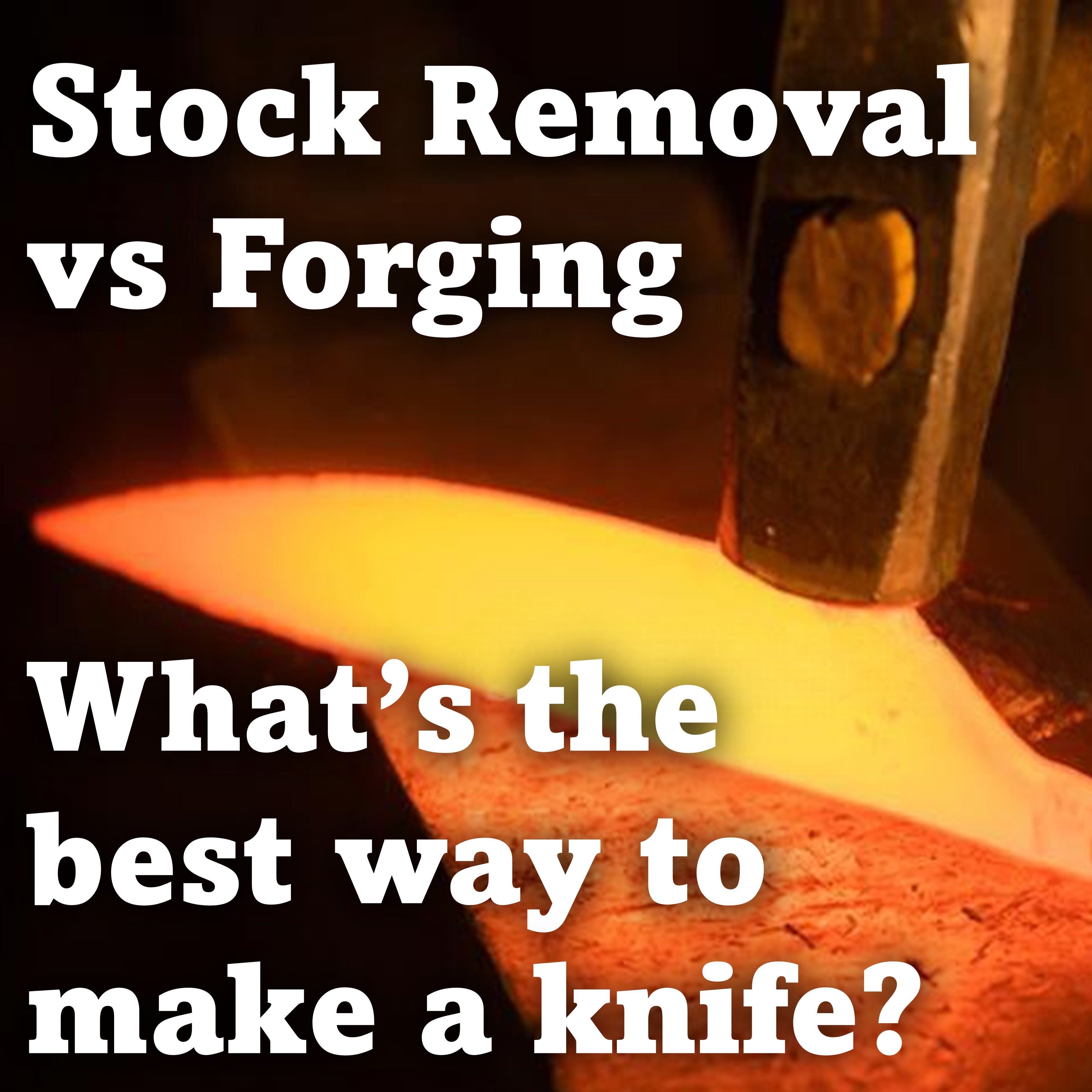Stock Removal vs Forging, What’s the best way to make a knife?
Stock removal and forging are two popular methods of knifemaking, each offering distinct advantages and disadvantages.
Stock removal is a process that involves removing material from a piece of steel to shape it into a knife. Knifemakers typically uses tools such as grinders, files, and abrasive belts to shape the steel. One of the notable benefits of stock removal is its relative ease and speed compared to forging. The technique allows knifemakers to create a wide variety of shapes and designs without requiring additional tools like forges and anvils and heating the steel up.
Additionally, stock removal lends itself well to mass production, making it suitable for creating large numbers of knives. The process can be automated and replicated efficiently, which is advantageous for commercial knife production. Moreover, stock removal reduces some of the extra work associated with forging. By bypassing the heating and cooling processes involved in forging, the need to bring the steel's crystals back to a normalized state is minimized.
An extra benefit to stock removal is that due to the steel never being deformed it remains as a flat and even bar of steel, this makes it easier to create a knife as you will always have the flat sides as a reference point to create your scribe lines, over a forged product that if done incorrectly will be bumpy, uneven and not flat.
Forging, on the other hand, is a more traditional and labour-intensive method of knifemaking. It entails heating the steel to high temperatures and shaping it using a hammer and anvil or other forging tools. This technique requires a high level of skill and expertise to create refined and intricate shapes. Consequently, forging is often preferred for crafting custom, one-of-a-kind knives that showcase the knifemaker's artistry and craftsmanship.
Furthermore, forging offers the advantage of material efficiency. The steel can be heated, bent, and stretched during the forging process, allowing the knifemaker to achieve desired shapes while using less material. This becomes particularly relevant when creating integral knives, where the handle or part of and blade are forged from a single piece of steel. Stock removal can also be used to make integral knives, but it requires starting with thick stock, leading to significant waste compared to forging.
A part of the discussion that’s often left out is what is most fun. In my own personal experience, I love and enjoy the forging process the most out of anything else in knifemaking. Being able to heat steel up and move it around into the shapes I want feels like a superpower. The satisfaction that forging brings and the knowledge of a job well done is unparalleled for me personally. Others don’t enjoy forging as much and that’s ok.
Ultimately, the choice between stock removal and forging hinges on personal preference, the desired outcome, and the goals of the knifemaker. Some knifemakers prioritize the speed and precision of stock removal, appreciating its versatility and ease of replication. On the other hand, others find satisfaction in the traditional artistry and craftsmanship inherent in forging, relishing the opportunity to create unique, handcrafted knives. Regardless of the route you choose its important to always be trying to best your own skills and work. Improving where you can and always looking for what can be done better.
















